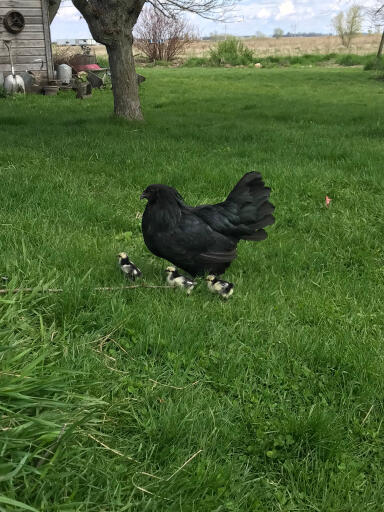Sumatra Chickens


Breed Rating (3 Reviews)
| Appearance | |
| Friendliness | |
| Hardiness | |
| Egg | |
| Garden |
Sumatra History
Sumatra Behaviour
Cocks weigh around 5-6 pounds and hens 5 pounds. Miniatures - cocks 26oz and hens 22oz
Sumatra Varieties
Sumatra Status
Sumatra Pictures




Sumatra For Sale
Latest Reviews For Sumatra (3 of 3)
Fantastic breed, but not for beginners - Gillian,
I have kept a lot of breeds over the years, and these are probably my favourite, but I haven't always found them easy. We keep ours in a netted pen on the lawn, which is moved daily on about a 30 day cycle, and it works brilliantly. Pro's: Mine lay medium, white or tinted eggs, prolifically through most of the year, tailing off in the autumn /winter. Excellent broodies and mothers Fantastic foragers, wary and wily, always talking to each other. Exceptionally beautiful Haven't moved too far from the ancestral chicken and they are both healthy and hardy Cons: Houdinis among chickens. Hens are smart, and have vertical take-off capability; even with one or both wings clipped, they can reach the top of a 7ft fence. Slow maturing - cocks take about 2 years to reach full growth and maturity, and can change a lot between 1 & 2 years, so selecting your breeding stock can be a long wait. Hens can be very aggressive to each other. I have found I can keep the cocks together 'till they are about 9 months old, then they start to fight seriously Cocks can get dangerously aggressive if they are too tame. My first one attacked anything except other birds, that moved within his range of vision (fortunately only about 6ft), including dogs. Not really happy kept indoors Cocks multiple spurs can grow into their legs, and may need trimming on a regular basis (easy) Very noisy, make a lot of strange sounds Absolute garden trashers when they get loose.
Beautiful and exceptionally friendly - Erin,
We have a hen and a rooster. The hen is called Java. She took around 9 months to start laying but now she is going strong laying a tinted egg almost every day. She eats a lot now but ate very little when she wasn't laying - she was not costly to care for. She used to be pretty flighty but now is our tamest hen and likes to sit on my shoulder or lap. She is incredibly gentle with other chickens and gets bullied by our pekin. Our boy is called Bali and he is aggressive but not as bad as Sumatras are usually described and he's only trying to protect Java.
Black Sumatra hens - Jill,
I have had two of these hens for the last three years. They are aloof and hardy. They come to be scatter fed as they are totally free range preferring to roost extremely high up in the open hay barn rafters, rarely using the coop. One is always going broody, hiding eggs and eventually being tracked down sitting on quite a few and growling at being disturbed. Her bark is worse than her bite. Though she us particularly aggressive to the sheep who keep their distance when she’s like that. They both lay daily for a while then have a week or so off for a rest. I like them as they are not needy and not affectionate. Just go about their business quite happily, totally free range, scatter fed morning and night with layers pellets and corn at night.







